The Nature of the Taiga
A comprehensive insight into the flora and fauna around Burträsk
The Flora of the Taiga: Trees, Berries, and Flowers
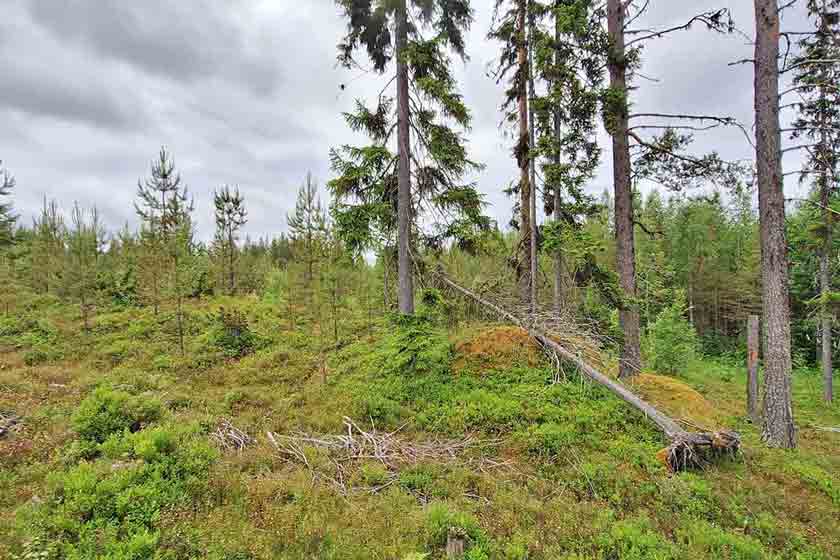
The landscape around Burträsk is dominated by the boreal coniferous forest, the taiga. This forest type is characterized by robust tree species adapted to the harsh climate. The main representatives are the Norway spruce (Picea abies), Scots pine (Pinus sylvestris), and silver birch (Betula pendula). While spruces often form dense, shady stands on moister soils, pines prefer drier locations and allow more light to reach the ground. Birches are pioneer trees that quickly colonize open areas and, with their light-colored trunks, create the typical Scandinavian landscape look.
The forest floor is a carpet of mosses and lichens that play a crucial role in the ecosystem. Particularly important are the reindeer lichens (Cladonia rangiferina), which are the main food source for reindeer in winter, and the peat mosses (Sphagnum spp.), which store huge amounts of water in wetlands. In summer, the ubiquitous blueberries (Vaccinium myrtillus) and lingonberries (Vaccinium vitis-idaea) attract not only animals but also people. With a bit of luck, one can also discover rare beauties like the protected lady's slipper orchid (Cypripedium calceolus).
Which trees dominate the forests here?
The forests are mainly boreal coniferous forests, dominated by spruce (Picea abies) and pine (Pinus sylvestris), interspersed with the characteristic birches (Betula spp.).
Am I allowed to pick berries and mushrooms in the forests?
Yes, thanks to the Swedish Right of Public Access (Allemansrätten), you are allowed to pick berries and mushrooms for your own use. The most common berries are blueberries and lingonberries.
What are lichens and why are they important?
Lichens are a symbiotic community of a fungus and algae. Reindeer lichens are the main food for reindeer in winter and an indicator of clean air, as they are very sensitive to pollution.
What role do mosses play on the forest floor?
Mosses, especially peat mosses in wetlands, are huge water reservoirs and help regulate the water balance. They also form the basis for humus formation and nutrient storage in the soil.
Are there rare or protected plants in the region?
Yes, one example is the magnificent lady's slipper orchid (Cypripedium calceolus), which is protected and can be found in the semi-shady riparian forests.
Do the Sámi people use the region's plants?
Yes, the Sámi, the indigenous people of the region, have been using the flora for millennia. They use berries as food, but also other plant parts like birch leaves or lichens for medicinal purposes and crafts.
The Fauna Part 1: Sweden's "Big Five"
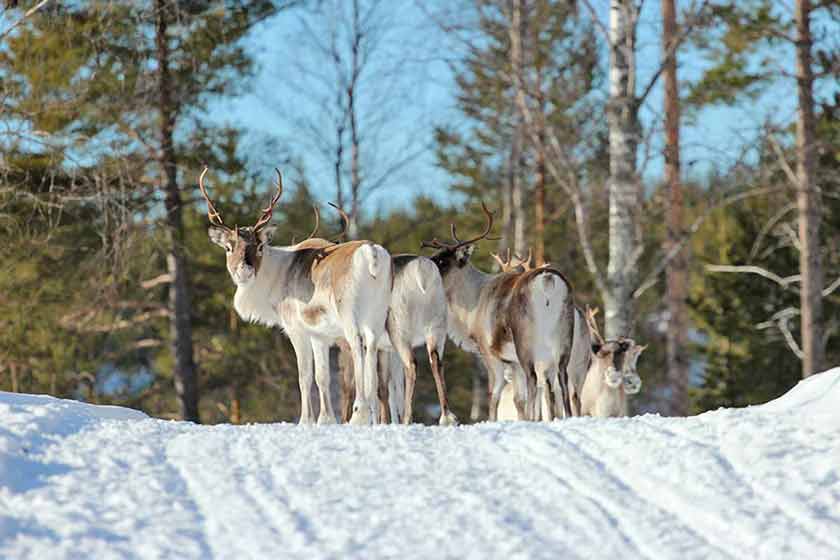
The vast forests and wetlands around Burträsk are the habitat for Sweden's iconic large mammals, often referred to as "The Big Five." These include the moose, brown bear, wolf, lynx, and wolverine. While moose and reindeer are more commonly seen, the other large predators are extremely shy, and a sighting is a rare stroke of luck, but their presence is a sign of the pristine and complete ecosystem.
What animals make up Sweden's "Big Five"?
The "Big Five" of the Swedish wilderness are the brown bear (Ursus arctos), the wolf (Canis lupus), the lynx (Lynx lynx), the wolverine (Gulo gulo), and the moose (Alces alces).
What are the chances of seeing a moose?
The chances are relatively good, especially at dawn and dusk. Moose often stay near riverbanks, lakes, and wetlands to feed on aquatic plants. Drive slowly on smaller forest roads and keep an eye out.
Are the bears in the region a danger?
Brown bears are extremely shy and avoid humans. An encounter is very rare. They generally pose no danger as long as you don't surprise or corner them. Making noise while hiking (talking, singing) helps to scare them away early.
What role does the wolf play in the ecosystem?
The wolf is an apex predator that regulates the populations of large herbivores like moose and reindeer. This prevents overgrazing and keeps the herds healthy, which is important for the balance of the entire ecosystem.
What is a wolverine?
The wolverine is a rare and robust mustelid, perfectly adapted to life in the snow. It is a skilled hunter and scavenger, and its presence is an indicator of an intact and extensive wilderness.
What is the difference between a moose and a reindeer?
The moose is the largest member of the deer family and usually lives solitarily in forests. The reindeer is smaller, lives in herds, and is famous for its long migrations. A special feature is that female reindeer also grow antlers.
The Fauna Part 2: The Inhabitants of the Waters
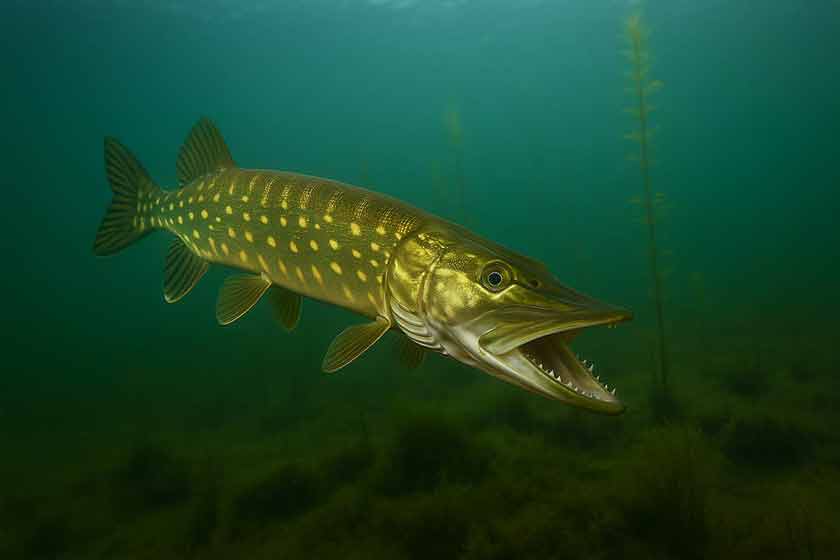
The countless lakes and rivers of the region are home to a diverse fish fauna that makes every angler's heart beat faster. From aggressive predators in the lakes to challenging salmonids in the rivers, the region offers the right target fish for every fishing technique. The water quality is excellent, which is reflected in healthy and strong fish stocks.
The most important species are the pike and the perch, which are found in almost all waters. A specialty of the region is the strong population of zander in Lake Burträsket. In the flowing waters like the Sikån and Risån, fly fishers find their luck hunting for trout and grayling. Larger rivers like the nearby Vindelälven are also known for their migrations of salmon. In winter, anglers specifically target the tasty burbot or the char.
Which is the most common predatory fish in the lakes?
The pike (Gädda) and the perch (Abborre) are the dominant and most frequently caught predatory fish in almost all lakes and calm river sections.
Is there a fish species that is special to the Burträsk region?
Yes, Lake Burträsket and its associated river system are known for their remarkably good population of zander (Gös) for northern Swedish standards.
What fish can I catch in the rivers?
In the faster, oxygen-rich sections of rivers like the Sikån, you will mainly find brown trout (Öring) and grayling (Harr), which are very popular with fly fishers.
Can you fish for salmon nearby?
While the local Bureälven river has only a small salmon run, nearby larger rivers like the Vindelälven or the Byskeälven are famous wild salmon rivers of international repute.
What is "Pimpelfiske"?
"Pimpelfiske" is the Swedish term for ice fishing. In winter, when the lakes are frozen, this is a very popular method to specifically target perch, char, and burbot.
Do I need a permit for fishing?
Yes, a valid fishing permit ("Fiskekort") is mandatory for virtually all waters. It can often be purchased online or at local shops. It is very important to respect the local rules.
The Fauna Part 3: Lapland's "Little Five"
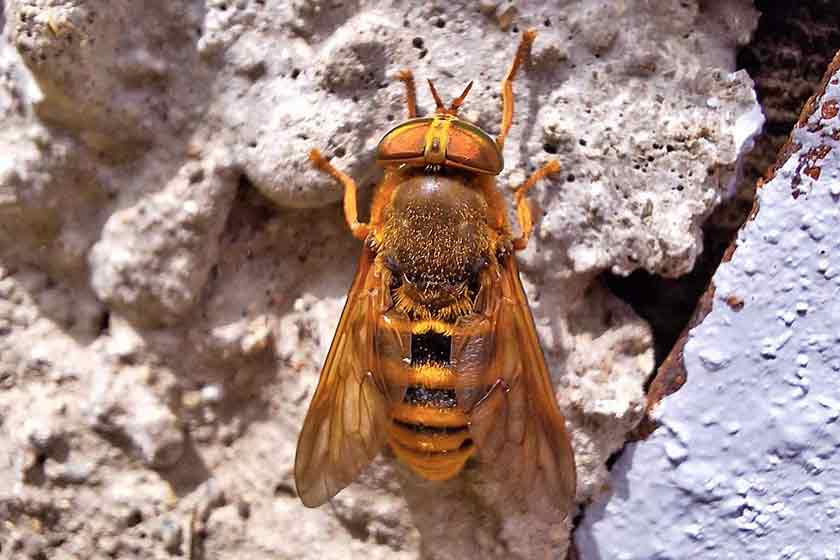
While the "Big Five" are impressive, the true rulers of the Lapland summer are often overlooked: the "Little Five." This term encompasses the immense biomass of biting flying insects, whose peak season is known locally as "räkkä." This phenomenon is not a plague, but a sign of a healthy, vibrant ecosystem and the crucial food source for birds and fish.
This flying armada mainly consists of four groups: the ubiquitous mosquitoes (Culicidae), the small but painfully biting black flies (Simuliidae), the large and fast horseflies (Tabanidae), and the tiny, insidious biting midges (Ceratopogonidae). On the ground, the wood ant (Formicidae) completes this group as an important ecosystem engineer.
What does the term "räkkä" mean?
"Räkkä" is a Finnish term that describes the peak season of stinging and biting insects in midsummer (approx. mid-June to late July). It is a sign of a healthy ecosystem.
Which insects are the most annoying?
That depends on the situation. Mosquitoes are the most ubiquitous. Black flies bite painfully and come in swarms. Horseflies are large and aggressive in the sunshine. Biting midges are tiny and can get through standard mosquito nets.
What is the best way to protect myself?
The best strategy is multi-layered: 1. Light-colored, loose-fitting clothing. 2. A mosquito hat with a net for the face. 3. Effective repellents with DEET or Icaridin for exposed skin. 4. Area protection at the campsite, e.g., with a Thermacell device.
Are the stings or bites in Lapland dangerous?
No, for humans, the bites are generally harmless. Unlike in tropical areas, diseases like malaria are not transmitted here. The biggest danger is a bacterial infection from scratching the bites.
What clothing is most suitable?
Light-colored, long-sleeved, and loose-fitting clothing made of a tightly woven fabric that mosquitoes cannot bite through (e.g., G-1000) offers the best protection. Dark colors should be avoided as they particularly attract horseflies.
Does a campfire help against mosquitoes?
Yes, the smoke from a campfire is a traditional and effective way to repel mosquitoes from the immediate area. However, always be sure to check the local forest fire warnings.
The Fauna Part 4: The Hidden Life of Amphibians
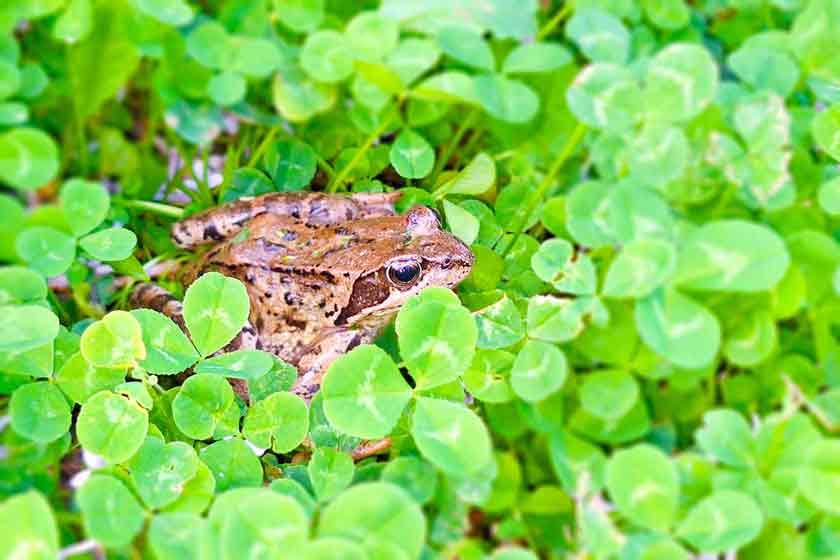
Besides the large and small animals, there is an often-overlooked but fascinating group of inhabitants in the countless wetlands, ponds, and on the shores of the lakes and rivers: the amphibians. Their presence is a strong indicator of clean water and intact, small-scale habitats. They lead a hidden life and are an important part of the food web.
Which amphibian species can I find in the region?
Typical species for Northern Sweden are the common frog (Rana temporaria), the moor frog (Rana arvalis), whose males can turn blue during the mating season, and the common toad (Bufo bufo). The smooth newt (Lissotriton vulgaris) can also be found in suitable waters.
When and where can you best observe amphibians?
The best time is in spring after the snowmelt. The animals then migrate to their spawning waters – still, shallow bodies of water like ponds or calm lake bays. On mild evenings, you can hear their mating calls.
Are amphibians protected in Sweden?
Yes, all amphibian and reptile species in Sweden are protected by law. It is forbidden to kill, injure, capture them, or to remove or damage their eggs (spawn).
What role do amphibians play in the ecosystem?
Amphibians are an important link in the food web. They eat large quantities of insects and worms. At the same time, they serve as prey for birds (e.g., herons), fish (e.g., pike), and some mammals.
Why are wetlands so important for amphibians?
Amphibians need water for their reproduction, as their larvae (tadpoles) develop in water. The wetlands, bogs, and shore zones of the region provide exactly these vital spawning grounds.
Do amphibians have natural predators here?
Yes, many. Their spawn and tadpoles are eaten by fish, dragonfly larvae, and water beetles. The adult animals are hunted by birds, snakes (like the common European viper), and mammals such as foxes or martens.
